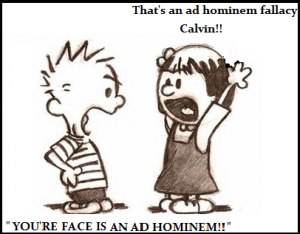by Charles Plant | May 27, 2015 | Leadership Development
 Since I wrote a post on Monday entitled If, Then, Else, I figured I should follow up that one with ‘End If’. Bear with me here for a sec and you’ll see why this is relevant and interesting (at least to me.)
Since I wrote a post on Monday entitled If, Then, Else, I figured I should follow up that one with ‘End If’. Bear with me here for a sec and you’ll see why this is relevant and interesting (at least to me.)
In computer terms End If is the command that is used to terminate a multiple line “If” command. (Written ‘endif’ for those who like to correct my spelling.) But I’m not talking about programming here but how you know when you’ve reached the end of a task.
The best case in point is in the development of process. How do you know when you’ve finished creating a process? I’m working with a growing company called Veloxsites that has developed a platform for partially automating the production of websites for small businesses. We are growing like gangbusters these days with all sorts of new resellers being signed up.
Signing up a new bunch of resellers in a short period of time has really shown how bad our on-boarding process was. To be frank, it really wasn’t much of a process and we were probably guilty of winging it.
So being good worker bees we worked hard to document the process and to create pre-packaged Statements of Work, Project Plans etc that we could re-use so we could reduce the complexity of the reseller on-boarding.
This wasn’t hard to do and we accomplished the task of setting up the new process in rapid order. But the funny thing was that when we thought we were finished, we kept getting funny questions from resellers that indicated that the process wasn’t meeting their needs.
So we looked at this process again and decided that we were creating all sorts of artificial hoops and barriers that resellers had to go through that they didn’t appreciate. We had adopted a big process mentality when it just wasn’t needed.
So when we could have said “End If” the process was documented and automated to the extent possible, we decided that we should “End If” the process was as short and painless to resellers as possible.
What we then did was take apart the process, trying to figure out which steps added value and which ones didn’t. As it turned out, few of these steps added value so we started chopping and then we really started automating.
What we have arrived at looks nothing like where we started. We decided that we could almost entirely eliminate the process of on-boarding resellers if we eliminated stages and skipped straight to the end stage of an implementation. We could also eliminate complexity by almost entirely automating the process.
We haven’t finished yet but we are planning to arrive at a point where a salesperson can on-board a new reseller in five minutes in the middle of a sales call. We can take a process that used to take two weeks and five people and bring it down to something trivial.
We decided to “End If” the process took us no work whatsoever.
by Charles Plant | May 25, 2015 | Leadership Development
 I was sitting with several people in a meeting recently trying to figure out why they just weren’t getting what we were talking about. It was one of those situations where we had had a meeting recently and made a number of key decisions. Now we were meeting to decide something else and the results of the first meeting clearly (to me at least) had implications on what we had to decide in the second meeting.
I was sitting with several people in a meeting recently trying to figure out why they just weren’t getting what we were talking about. It was one of those situations where we had had a meeting recently and made a number of key decisions. Now we were meeting to decide something else and the results of the first meeting clearly (to me at least) had implications on what we had to decide in the second meeting.
But we were effectively re-hashing the first meeting all over again. Not being very high on the emotional intelligence scale, I was getting visibly frustrated at our slow progress. And then it hit me; they just didn’t see how the results of the first meeting impinged on the second.
They didn’t get: “If, Then, Else.”
I’ve since been in a number of situations where I recognized the same thing occurring. One of them was in Spanish class where we were conjugating verbs and one fellow student couldn’t seem to get the pattern for conjugation of -ar verbs and how all verbs of like types have similar endings. Another “If, Then, Else.” problem.
I’m still trying to understand the problem. Is it an inability to see how the two situations are similar or is it an inability to transfer the conclusion from one situation to the other? Or even worse, could it be both?
I suppose this is the foundation of logic and reasoning. I’ve tried to figure out if an “If, Then, Else” failure is a failure in inductive, abductive, or deductive reasoning but I get a little lost in the definitions of these so I’ll leave that to another time.
Whatever it is, a person who gets “If, Then, Else” (computer scientists and engineers) tends to get very frustrated with people who don’t get it.
Since I would rather work with people who “get it” rather than those who don’t, I’m trying to figure out how you can screen for “If, Then, Else” in an interview. I’ll add it to the list of things you want to hire for which now include:
- If, Then, Else ability (logic and reasoning)
- Attitude (as opposed to aptitude)
- Emotional Intelligence
by Charles Plant | Apr 22, 2015 | Leadership Development
 I have had a number of conversations recently with people who were lamenting the state of disorganization in their companies. The stories revolve around people spending too much time getting stuff done due to a lack of process or an inability of others to follow process. Apparently this results in much crazy making and general confusion.
I have had a number of conversations recently with people who were lamenting the state of disorganization in their companies. The stories revolve around people spending too much time getting stuff done due to a lack of process or an inability of others to follow process. Apparently this results in much crazy making and general confusion.
I thought back to places I worked years ago and I must admit until recently, disorganization was not as much of a problem. Things didn’t happen as fast and changes weren’t needed quite as often. So when disorganization occurred as it inevitably did, there was enough time to sort it out before it became soul destroying.
But I have worked in several places recently that were crazy places and in one in particular, process was not valued so the place just got crazier the more people there were. This was supposed to be a good thing as it was supposed to foster innovation. I guess some people think they thrive in a state of constant turmoil.
I’m working now with a client that devolves into confusion on a regular basis as the company grows and experiences new growth pains. Each new situation results in disorganization but the difference is that the people there actually like the addition of process as they see how it reduces complexity and saves them time. So whenever there is confusion, we work to add small light processes to eliminate the nonsense.
The difference between the two places though is a willingness to embrace process, people who will step up to develop it, and an appreciation of how to implement process.
And I think that this is the essential difference between sanity and crazy-making. There are not enough workplaces in the knowledge economy that embrace process and as these organizations grow they become more and more disorganized. In these places, disorganization is the new normal.
by Charles Plant | Apr 8, 2015 | Leadership Development
 There is a great post in Inc Magazine that discusses five common leadership fears and how to get over them. These are the fears they have identified:
There is a great post in Inc Magazine that discusses five common leadership fears and how to get over them. These are the fears they have identified:
- Criticism
- Failure
- Making Decisions
- Speaking
- Responsibility
I like the list as it’s a good summary of leadership fears but in my mind these fears are all related to one central fear and that is fear of failure.
- If you don’t listen to criticism, you will never find out that you have failed.
- If you don’t make decisions, you can’t fail.
- If you shut up, no one will know you’re wrong.
- If it isn’t your responsibility, you haven’t failed.
Now the post goes on to recommend how people can get over each of these fears but since they all relate to a fear of failure, there should be one central way of overcoming the fear of failure. To get there we need to look at why people are so afraid of failure.
I think it all comes down to an inability to be vulnerable. Now here I am talking about this mushy emotional intelligence stuff again but it really does help to be aware of what’s going on emotionally as there isn’t always a logical solution to a problem. And while you can be aware, it doesn’t mean you have to deal with these random emotion things, just acknowledge the source.
So vulnerability, Brene Brown’s favourite subject, rears its ugly head again. Vulnerability as defined, refers to the inability to withstand the effects of a hostile environment. That’s what happens when you fail, the environment gets hostile.
But there is an easy way of getting over the problem of vulnerability at work and that is by realizing that no one cares about you anyway, they really only care about themselves. These other people who might be criticizing you are just letting you know what their needs are.
They want to be recognized, to be heard, to be listened to and to be right. If you play to their needs, it really won’t matter that you failed. Just listen to them, acknowledge that they are right, that you were wrong and that you failed and you will have met their needs.
I guarantee that they won’t remember that you failed but instead that you are a good listener and very agreeable, someone who makes them feel better by meeting their needs.
by Charles Plant | Apr 1, 2015 | Leadership Development
 I often feel there should be rules about arguing specifically to prevent Ad Hominem fallacies in arguments. Something like the ones the Marquess of Queensbury adopted for boxing. In my fantasyland of arguing, the red card would be reserved for these fallacies.
I often feel there should be rules about arguing specifically to prevent Ad Hominem fallacies in arguments. Something like the ones the Marquess of Queensbury adopted for boxing. In my fantasyland of arguing, the red card would be reserved for these fallacies.
Now I know in using the term Ad Hominem I’m committing all sorts of blogging faux pas by using Latin words but you can think of it simply as meaning “Against the Man” (or woman.) An Ad Hominem is a logical fallacy used by a cheater when he or she has no other way of winning an argument.
Instead of attacking the argument, the cheater attacks the person doing the arguing. This is actually a logical flaw in an argument that should render the argument invalid but it seldom does.
Types of Ad Hominem arguments:
- The standard Ad Hominem attacks the character of the person making the statement. “What would you know, you’re blond?”
- Poisoning the Well discredits a person upfront. “Don’t listen to Charles, he’s blond”.
- An Abusive Ad Hominem attacks the arguer’s background as in: “What would he know, all his friends are blond.”
- A Circumstantial Ad Hominem points out irrelevant circumstances such as a vested interest. “I wouldn’t trust Charles, he owns shares in a hair colouring company.”
- And finally a Tu Quoque says something must be invalid because the arguer is guilty of it herself. “Don’t tell me my hair looks like straw, you die your hair blond too.”
In my imaginary world of arguing I would be quick enough to be able to see an Ad Hominem across the room and render any attempt at one invalid. “Hey, that’s unfair!” I would say, “You just committed a Tu Quoque!”
But alas, I’m not that smart. I frequently find myself thinking what I should have said, if only I had thought faster. I have a term for this and it’s: “I Thought to him!”
If you aren’t any good at catching these things in flight, maybe you could learn to use them in arguments yourself. After all, if the average person is lousy at spotting a gratuitous Circumstantial Ad Hominem then maybe they are a good tool on their own.
So here’s what you should do: Review the list of Ad Hominems above and practice using them in arguments. Surprise and confound your friends and loved ones with arguments that can’t be countered. If you get really good at this you could even consider standing for election as this seems to be the prevalent technique in politics today.
by Charles Plant | Mar 18, 2015 | Leadership Development

Several weeks ago I was ruminating about various types of bias and I ran into one recently that I thought to be very interesting in terms of its implications. This is Confirmation Bias.
According to some definition pulled from somewhere “In psychology and cognitive science, confirmation bias (or confirmatory bias) is a tendency to search for or interpret information in a way that confirms one’s preconceptions, leading to statistical errors.”
When I was at MaRS Discovery District, (or should I say, when I was on MaRS) the then VP of Operations, Don Duval used to report that more than 80% of respondents to their survey gave MaRS a 4 or 5 out of five in rating the service they got from MaRS. Now at the time, not thinking about this stat very much, I thought this was an OK result.
The measure on the surface looks like a good one but I have since learned that if your average on customer satisfaction stats is a 4.2 or so, this is actually not a good result. The way I learned was by conducting a workshop where I got an average score of 4.2. I knew that the workshop, while not totally stinking, wasn’t very good. (These things happen.) But the participants were kind enough to give me a 4.2.
At the University of Toronto School of Continuing Studies, where I teach a course on Strategy Execution, my most recent score was a 4.8 and that I consider reasonable but now I don’t find it superb.
The problem is confirmation bias. People who have selected you as a supplier are subject to this confirmation bias as it is a hard thing psychologically for someone to admit they made a mistake. Having invested time in a supplier, a customer will want to confirm their own choice by not rating a supplier as poor. The way they get around this is by scoring someone as 4, not great, just OK. In the parlance of performance evaluations this is probably a “low meets.”
If your survey population is subject to confirmation bias you should be looking for an average above 4.5, not down around 4. And if you’re doing these types of studies, a better methodology to use is Net Promoter Score because it eliminates confirmation bias.
 Since I wrote a post on Monday entitled If, Then, Else, I figured I should follow up that one with ‘End If’. Bear with me here for a sec and you’ll see why this is relevant and interesting (at least to me.)
Since I wrote a post on Monday entitled If, Then, Else, I figured I should follow up that one with ‘End If’. Bear with me here for a sec and you’ll see why this is relevant and interesting (at least to me.)




